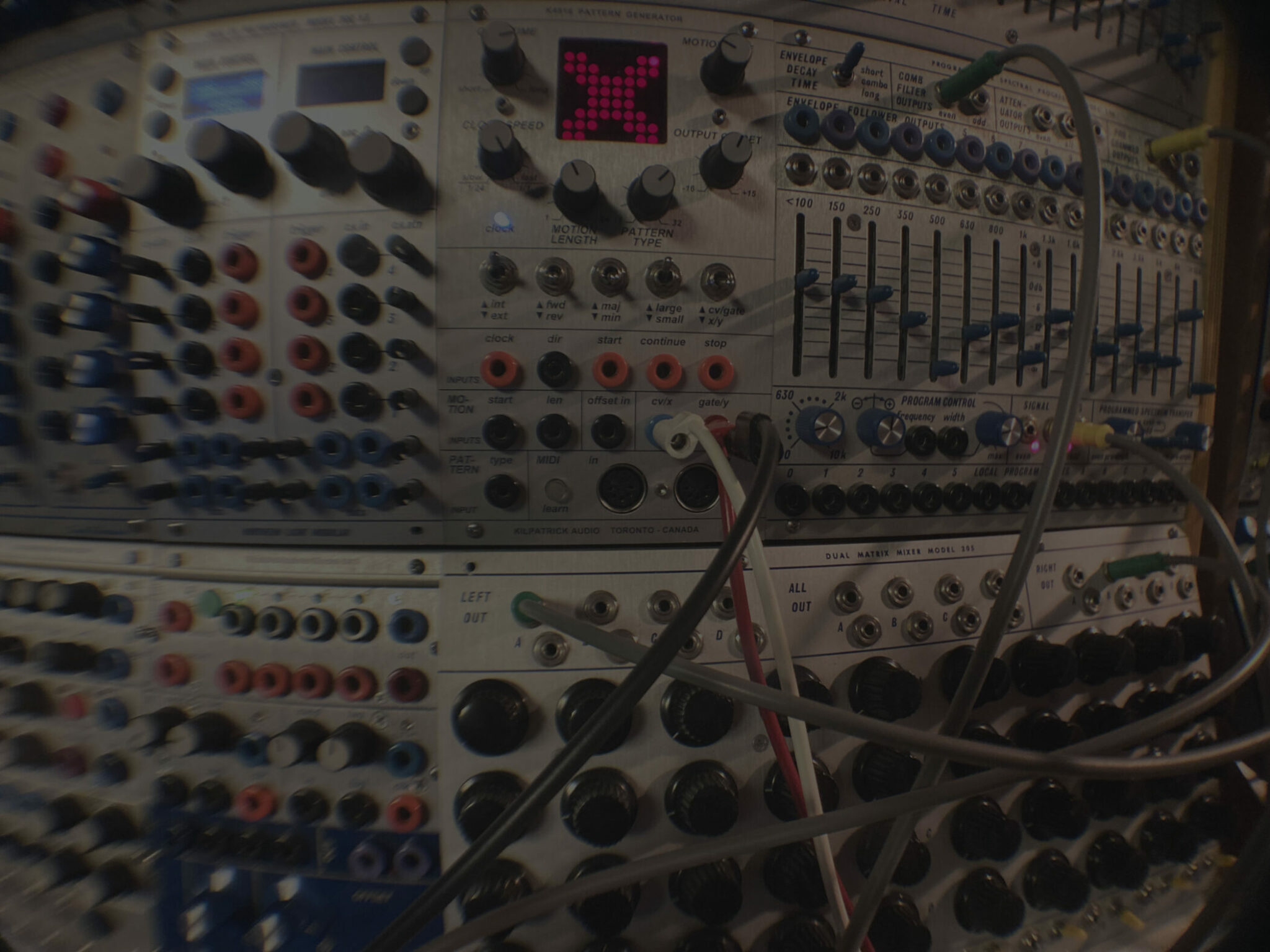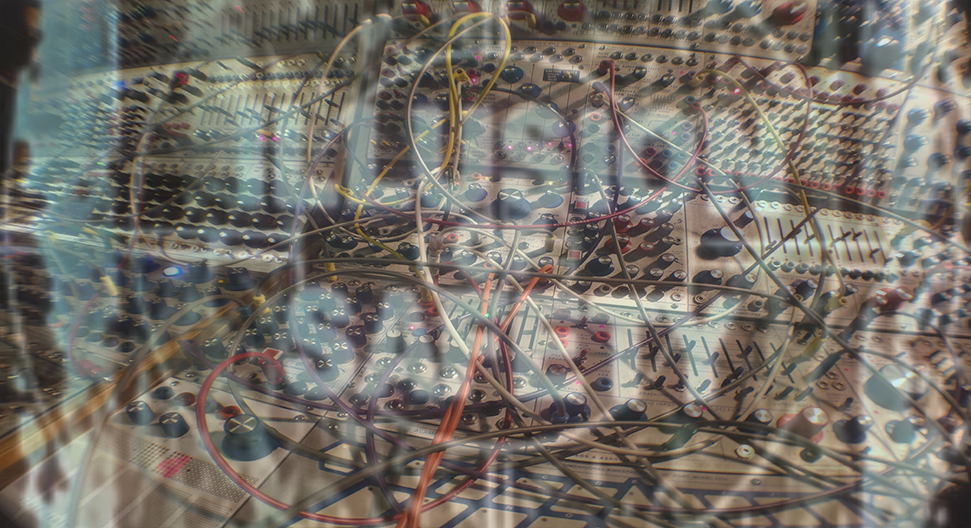
I.O.S. is celebrating 40 years of existence and this is his second Session for us: More Margins Of Error
Since 1983, on the labels Complacency, Die Stadt, Experimedia, Odd Size, Silent, Soleilmoon, Staalplaat, Tesco, Korm, Drone, no part of it, and Waystyx, Burke and his conspirators – under the Illusion Of Safety banner – have traversed over the course of 40+ full length releases. Almost every facet of the avant sound plane, from early industrial pop deconstruction, to blindingly minimal sound art, to densely surreal found-sound collage, each unique approach bending and reconstituting the expectations and possibilities of each realm. Plowing through layered field recordings, deeply rumbling tones, and eerie electroacoustic sounds with seamless transitions between cut-and-paste collages and manufactured drones, it’s easy to get lost in the deep passages.
It’s a surreal trip mixing outsourced sounds from all over the world and encompassing everything: abstract analogue synthesizer explorations, chaotic digital noise and voltage fluctuations, generating excitement in the bowels of analog equipment, raucous guitar improvisation, rattle and chilling moan of iron sheets, the creaking floorboards, resonances, fluctuations, scraps of samples is in perpetual motion background.
Driven with all this by some miracle , the author creates a monumental music! Nervous, anxiety-soaked, but at the same time, disturbing & attention-grabbing, creating a powerful hypnotic effect……. The sounds scatter in all directions, like circles on the water, but at the same time, remain the basis of a continuous, almost ritual, form easily detectable, or, conversely, only slightly palpable.
Performing over 300 live concerts throughout Europe and the states included No Fun 2008, the Wroclaw Industrial Music Festival 2009, Sonic Circuits in 2010, with Shen Wei Dance Arts in 2011 at the Metropolitan Museum of Art in NYC, and at the Crisis Data Transfer Pre-Party October 2023. Outside of IOS Burke has collaborated with Jim O’Rourke, Jon Mueller, Randy Greif, Darin Gray, Z’EV, Cheer-Accident, Thomas Dimuzio, Kevin Drumm, Bill Horist, and others.
You started playing in the early 80s. Cassette, Industrial scenes, how was it back then, can you share good anecdote, great memories?
Inspiration wise 1981 was so great for music. TG, Chrome, Tuxedomoon, This Heat, P.I.L. Cabaret Voltaire, Dome, 4A.D. Beggars Banquet, Gary Numan, John Foxx, A Certain Ratio… Fertile time. A of a lot of people making diy underground music, cassettes made it easy to put it out yourself and many of us were trading tapes. A few print resources were available for reviews and networking like Sound Choice magazine and Option and other smaller runs. Felt like a time anyone could make and put out their own music, bypass the system, make new friends and discover some interesting new otherwise unheard creations.
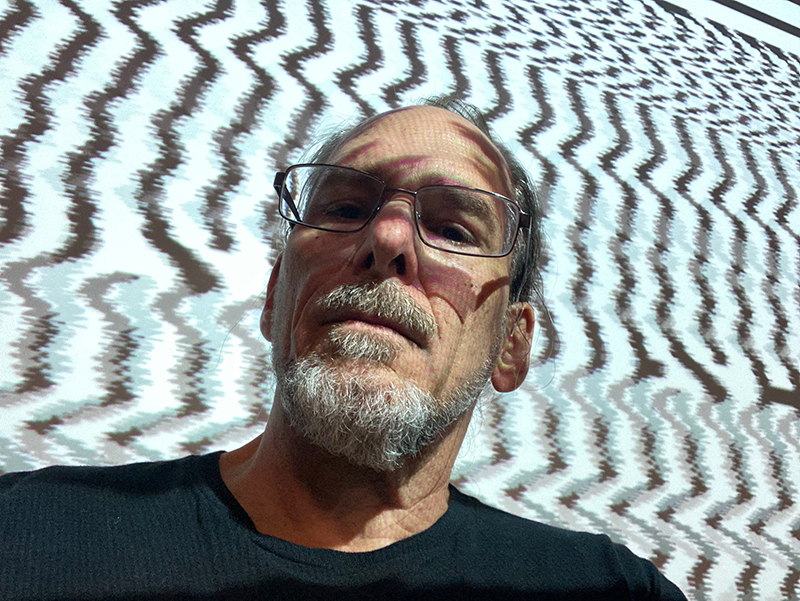
Would you like to retrace your career, maybe telling a little about those album of yours which paved the way and were crucial in your development?
Seeing “2001 A Space Odyssey” when I was 9 was a big formative moment for what I was to find interesting in Art & Music. Interest in Space/Psychedelic music was a start, Gong, Cluster, Cosmic Jokers, Tangerine Dream, Klaus Shulze, Then discovering Industrial music & seeing Throbbing Gristle’s final 2 performances in 1981 pushed me forward to actually start making music and moving toward this project in a focused way. The historical facts & details of how the project developed is well outlined on our website but I can say the publication of “Historical”, our first CD in 1992, was a big development as it came out on Staalplaat which was one of the best high profile experimental European labels, making such special packages. “Historical” being in a leather pouch with a 22 caliber Bullet.
The second Staalplaat CD “Probe” was also quite a cool package in a wooden box, coin embedded, sealed with toy money. That one was well received as it was long form dark heavy drone material with lots of fresh field recordings and was composed by Jim O’Rourke and myself. O’Rourke was already making quite a solo career by that point.
In 2014 I decided to hang up the project and take a break from music and to work on other musical styles I wanted to explore. After a long break my interest in revitalizing IOS was due to you, Philippe, thank you, and to Arvo Zylo (no part of it). Originally my submission to you – for Modulisme session 31 “Margins Of Error”, in 2020 – was to be issued as Soundoferror but I felt compelled to honor your request that it be as IOS.
A bit after that Arvo kept bugging me about my collaboration with Z’EV, which had been completed in 2012, and just sitting on the hard drive. Eventually it finally appeared as an album and CD with the collaboration of no part of it & a number of labels to make it happen. Between those two things, my interest was renewed to move forward again with more to say as IOS. Now I am interested to pursue both new modes and also return to old methods as IOS, moving back to technology and the impression we made from 1983-1990. I am less intent on pulling the rug out from under the music, less desire to shock and provoke in overt ways, I have better tolerance for long-form immersion, more ability to appreciate slow transformations, intention to not only provide an open narrative for every performance but to really listen myself, to get inside every sound and experience it in the moment. To immerse in a fever dream of alternative perceptions is always my goal. Originally I was calling our output Music Without A Film and I am returning to that organizing principle more and more, bringing back the sound and intent of what the project name has always signified for me: long form immersion into dark internal psychological soundtracks, encompassing and play with events in large spaces, loops, shortwaves, ominous synthesizer waves, controlled feedback, traditional instruments used in unconventional ways, and undefinable cryptic voices. The emphasis on play has always been present, these sounds, words, & ideas are fun to play with.

Would you like to go back to that period when you first discovered modular synthesis, the first stirrings, how it all took shape for you?
How were you first acquainted to Modular Synthesis? When did that happen and what did you think of it at the time?
How does it marry with your other « compositional tricks »?
Probably my first contacts were “Switched on Bach” and then “Silver Apples Of The Moon”. Those two really grabbed me, again this just a few years after being primed by the music & visual art of Kubricks’s 2001 I was ready for that. Later, mid 70’s, when I was doing a fair bit of psychedelics the Space music mentioned previously took hold of my consciousness.
Using modular is a linear process of discovery, enjoyable in the moment exploring a patch and tweaking until something resonates. When the time is right, recording some takes and later – in my case almost always – plenty of editing, mixing, adding and subtracting. My compositional approach with all music, really with any art form (music, photo, video), is a layered collaging process almost always. Recently more traditional composition approaches have become interesting for me.
Your compositional process is also based upon the use of acoustic instruments that you process or combine with Electronic. How do you work to marry that Electronic with your acoustic matiere?
I actually want to focus on that marriage more and I will at some point, especially in regard to extended techniques with piano and guitar with modular.
I originally bought my first Eurorack system to process guitar but still have yet to focus and return to this. There always is an element of attempting to mix and blend as many sources and inspirations into most releases and performances so I use what is at hand and try to keep performance and composition flowing and seemless, to integrate the sources (instruments/tools) and sonic content into a coherent satisfying story.

When did you buy your first system?
The first synth was a Crumar DS-2, then a Moog Source. System flirtation came at visiting Serge HQ on Haight Street (1979?), I had a tour and demo of a very large system there, a real shame I didn’t buy any.
Later before he moved to Japan Jim offered to sell me his modular collection, foolishly I didn’t even check them out.
What was your first module or system?
Finally bought in around 2009 after much research and got a small Doepfer system can’t remember the first modules but some early ones were a Wobblebug, Hertz Donut, audio interface, Macbeth dual oscillator…
How long did it take for you to become accustomed to patching your own synthesizer together out of its component parts?
Pretty quick I guess, but to actually get a handle on things and make more sophisticated patches (not that it matters, great things can be had with the simplest patch) probably a year or 2. But every time I go back to the modular the patching gets easier and more nuanced so am still climbing the ladder.

What was the effect of that discovery on your compositional process?
On your existence?
Got me back in to the moment. And out of the box.
The computer had taken over as the main performance tool and while that was fantastic and an almost infinite resource it was also a stumbling block in many ways. The linear nature of building a patch with hands, knobs, cables in the real world is unmatched. So it was a good “cure” to relieve me of the over extensive use of the Laptop and to also start enjoying creating in the moment on a new level. The sounds themselves were also something to marvel at and took making music to a different place.
I spent some years noodling, and at this time enjoyed a long break from composition and performance. Which was rewarding in its own way.
Quite often modularists are in need for more, their hunger for new modules is never satisfied? You owning an impressive amount of gear, how do you explain that?
We all want more, its built into our nature and sold to us in every aspect of our culture. Its hard to resist the urge to buy. When the going gets tough, the tough go shopping. Too much of everything is just enough. On the other hand there is some very interesting actual new developments that can be a boon to some new music process. Discipline is tough though, the urge to buy terrorizes us.
Do you prefer single-maker systems or making your own modular synthesizer out of individual components form whatever manufacturer that match your needs?
Both are fine. I guess the form factor being identical does make things easier to navigate, the disparate Euro system can get a bit taxing, so ideally something as uniform as Serge is appealing, and the aesthetic look, layout and blinky light appeal of Buchla is the most seductive of all, lovely large panels, good colors and design lines. And arguably even neater in that the audio and CV patching is clearly separate.
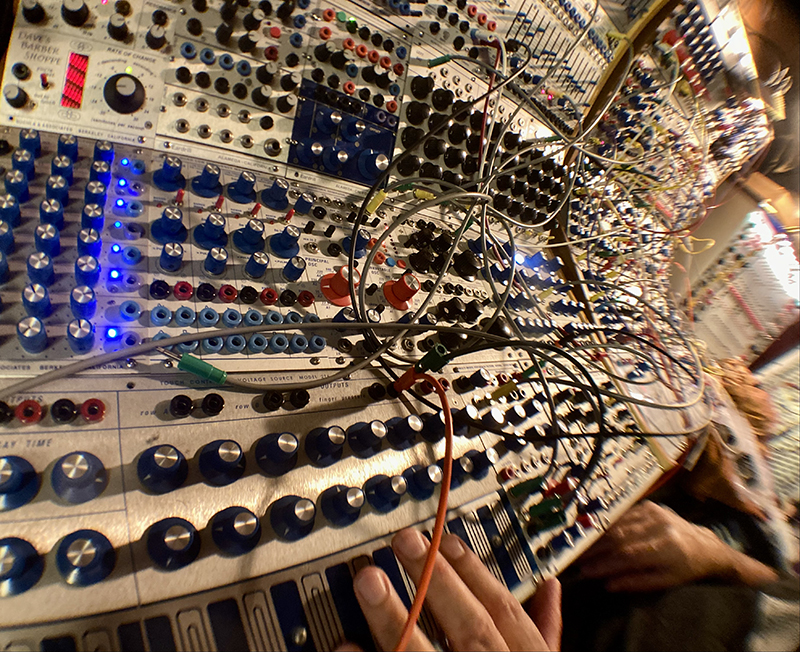
How has your system been evolving?
No more evolution for my Buchla, I have been selling some of it and also focusing on other things (Piano, songs, Illusion of Safety) it evolved quite a bit from 2010-2019 just getting to know different modules, now in detail for instance recently the 205 matrix mixer and 296 spectral processor for rediscovering the real magic in feedback.
Instrument building may actually be quite compositional, defining your sonic palette, each new module enriching your vocabulary. Would you say that their choice and the way you build your systems can be an integral part of your compositional process? Or is this the other way round and you go after a new module because you want to be able to sound-design some of your ideas?
Yes agreed, whatever choice to buy or build will determine how the system is used, what can be done with it. That wasn’t a part of my process with modular, I tried and moved past units to see how they sound/fit in my workflow before settling for the system now as is. then whatever is there is attacked in the moment to see what can happen.
I rarely envision a patch or sound idea in advance, I plug, tweak and progress until its sounding good, then hit record, or not. I do not sound design ideas but discover sounds by experimentation then use those discoveries recorded as sculpting tools to create a finished story.
Do you tend to use pure modular systems, or do you bring in outside effect and devices when playing or recording?
Depends, there are times that things have been very dry with NO reverb or effects, exploring the synthesis on its own. Especially at the early years with it when I used the Euro in a live setting.
Other times, especially if something is being tweaked towards a release, anything is fair game to use to make the recording sound great. In general when I am playing for fun and patching I rarely use external effects. Then I remember how good just the right amount of reverb or delay sounds and dial it in.
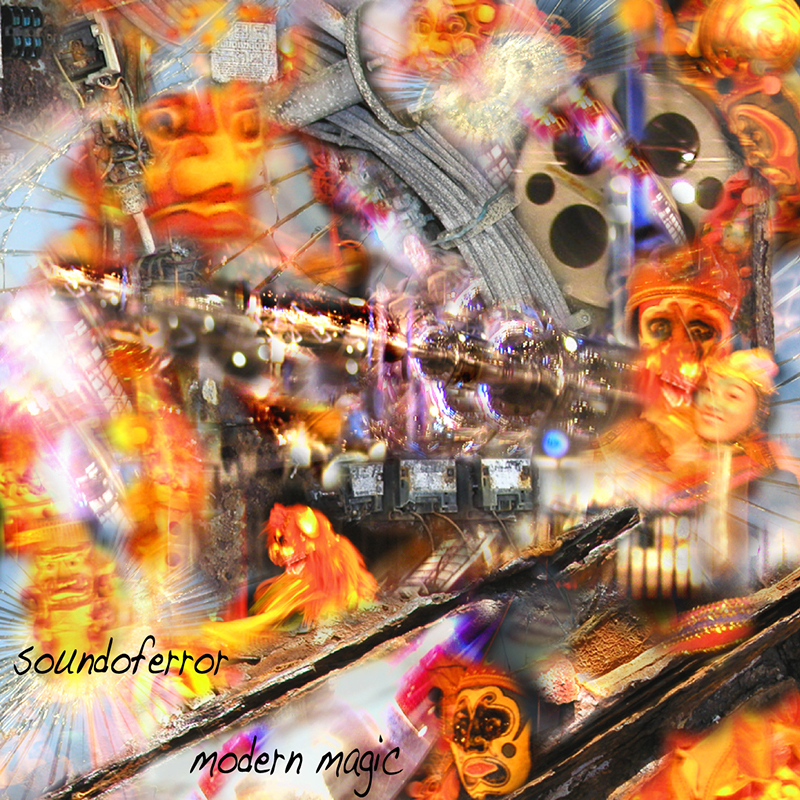
Would you please describe the system you used to create the music for us?
Small system of Buchla clone modules including the 292c, 266, 281, & 259r (the main primary source for all these recordings).
A Soundscape Processor/Generator filter by (Lassence/Vedicscapes), Dual Quad LFO (Lassence/Vedicscapes), 297 Phase Shifter , Wave Processor Model 45 (Vedicscapes, serge design), Modcan 54B dual sequencer (bananafied), and some utilities like quad Joystick, ear drill modules, mixers, and the Euroblade adapter, integral to these tracks with both the Mungo D0 & Chronoblob delays, and a mixer for feedback.
Can you outline how you patched and performed your Modulisme session?
Mainly the Euroblade adapter w/Chronoblob and Mungo D0 delays are the biggest part of the sound of these recordings processing the 259 with the Lassence/Vedicscapes filter. From November – February 2012 I played this setup into an Ableton Live session building up about 8 hours of recordings. Then over time editing and re-composing these live takes into the tracks heard as Session 31 Focused Systems Approach #1: [Buchla/Euro] >Margins Of Error.
https://modular-station.com/modulisme/session/31/
Then early this year the unused hours were further sculpted to produce this current session “More Margins of Error”. Perhaps the end result is something like 40% heard as played with no manipulation, the other 60% edited and constructed, but with no added elements or external treatments, all source material is from the system described. How it was patched exactly at the time was never documented.

Do you find that you record straight with no overdubbing, or do you end up multi-tracking and editing tracks in post-production?
When I am playing with Modular I just tweak and patch for fun, then turn on a recorder when something great is happening, then use this later either directly as is (Soundoferror material is pure in the moment recordings) or for further use as compositional raw material for IOS. For releases I almost always edit the recordings and alter add & subtract from until it is done.
Do you pre-patch your system when playing live, or do you tend to improvise on the spot?
To be clear I have never used a Buchla live.
Euro yes and I always pre patch to some degree then alter it during the performance

What do you think that can only be achieved by modular synthesis that other forms of electronic music cannot or makes harder to do?
There is such a potential for new sound discovery that is so deep and at the same time accessible with our hands, and is so visually intriguing which makes it very attractive. It is a process different than playing a real world instrument, so by its nature is a totally different way of working. Both are valuable and rewarding.
Have you used various forms of software modular (eg Reaktor Blocks, Softube Modular, VCVRack) or digital hardware with modular software editors (eg Nord Modular, Axoloti, Organelle), and if so what do you think of them?
I have VCVrack and find it helpful to learn about patching and modules. Sounds great, easy to use with built in instructions, Love it.
I use the old Reaktor (5) so not the same thing as Blocks but I love that. One of the instances is a VCS-3 emulation that is way cool, the track Ground from the new IOS CD Pastoral uses this.
https://illusionofsafety.bandcamp.com/track/ground

What would be the system you are dreaming of?
Not to own they are way too big but to play with, Arp 2500, Polyfusion, Synthi 100.
Are you feeling close to some other contemporary Modularists?
Which ones?
Literally with Thomas Dimuzio. We had many great live collaborations over the course of our long friendship & I got him started down the path toward modular away from his already amazing proprietary live sampling & feedback system used on our releases.
So I am a bit to blame for the loss of one really great sound creation system that he created and mastered (that I hope he brings out of retirement for us in the future!) but also for his current trajectory with the Buchla. His current home system is literally epic and the small live one now integrating the Skylab & Chase Bliss pedalboard is a stunner, he has built in a lot of gestural control and nuance, & has really honed in the live Buchla system to a new level, quite impressive, I have no idea how he keeps track of the control paths!

Which pioneers in Modularism influenced you and why?
Wendy Carlos for the traditional musical possibilities inherent in the modular Sytem and Morton Subotnick for the more creative out of the box possibilities of pure sound creation.
What have you been working on lately, and do you have any upcoming releases or performances?
Outside of IOS there has been a few things. Been continuing work with Piano including performance with some singer songwriter & modern classical material, this is likely to end up sounding like Satie meets Mark Hollis/David Sylvian/Scott Walker, Burt Bacharach territory, who knows..
I did a project called Total Sound with former IOS, Cheer-Accident, & Dot Dot Dot Member, Chris Block. Sort of a future sound of London Dumbfunk Mathfail Overload Fusion Music groove thing. Got one release so far on Bandcamp and there’s more to be put together from our recordings over the years.
I am continuing to make conceptual “rock’ videos for others projects as Soundoferror releasing them on my Youtube. I love to edit video and hope to get more commissions for these. I have been doing some improv projects locally in Chicago with a great drummer Eirk Sowa, we are planning more performances next year. Also reuniting since 2012 for Tertium Quid an improv trio with Dave Abramson (drum) and Bill Horist (guitar) in Seattle live in January.

Re: Illusion of Safety, this being the 40th anniversary of the project things have been rolling. I should mention that Illusion of Safety in general has always had synthesis at many of its core pieces but is not exclusively synth driven like the content on this session which is unique in this way, purely synthesis.
The first IOS performance since 2014 was performed on 10-5-23 by Thomas Dimuzio & I as IOS with his amazing Buchla Skylab System & Chase Bliss pedal board array at the Recombinant Media Labs Crisis Data Transfer festival pre-party with a large projection and 8 channeled high power system. Was lot of fun, & a powerful set, some of which will appear inevitably.
I have been populating our YouTube channel with monthly installments including old IOS videos that have not been seen since the late 90s at live performances and also new productions:
https://www.youtube.com/@illusionofsafety
I spent the summer creating a new multichannel synced A/V composition FLOAT which was performed in Chicago on 11/4/23 at Elastic Arts on their 16 Channel CLEAT system for the 40th anniversary performance, the first in Chicago since 2014. The performance was recorded in binaural and will be mastered & released by Andrew Weathers on his Full Spectrum Records label. The piece will also be performed over the next year or more on various legs of the ongoing tours (Europe in April & November), & at the Full Spectrum Records label showcase at The Lab in San Francisco 1.13.24.
I just finished a short 7 date tour of Europe in November 2023 plus one live radio & interview on Radio X.
There will be additional performances on the west coast in January, 1-11-24 will be a duet with Thomas Dimuzio (with his Buchla Skylab and Chase Bliss pedal array) at The Peacock Lounge in San Francisco. Also IOS in L.A. at Coaxial Arts on 1-14-24. In Seattle will be a Tertium Quid performance on 1-19-24 and an IOS performance with Daniel Menche and Alan Jones on 1-20-24 both of these at The Chapel Performance Space at Good Shepherd Center.The release schedule for 2024 includes, a 12” Vinyl pressing of “Historical Distractions”, the remastered best of the decomposition (sampling) tracks from 1992’s “Historical” and 1994’s “Distraction” on Andy Ortman’s Nihilist label.
The “FLOAT” CD on Full Spectrum records. A remixed remastered edited version of the heavy dark ambient “Cancer” release from 1992 likely as 12” Vinyl on Aufabwegen in Germany. A cassette on Carsten Olbrich’s Ebus Music label of the live actions from the last performance of the recent tour recorded 11-29-23 on Radio X in Frankfurt. In addition the Bandcamp page is fully populated now with just about the entire archive, over 40 releases plus a subscription series of at least 10 minutes of rare, old unreleased, or new additional material monthly for subscribers
https://illusionofsafety.bandcamp.com/subscribe

